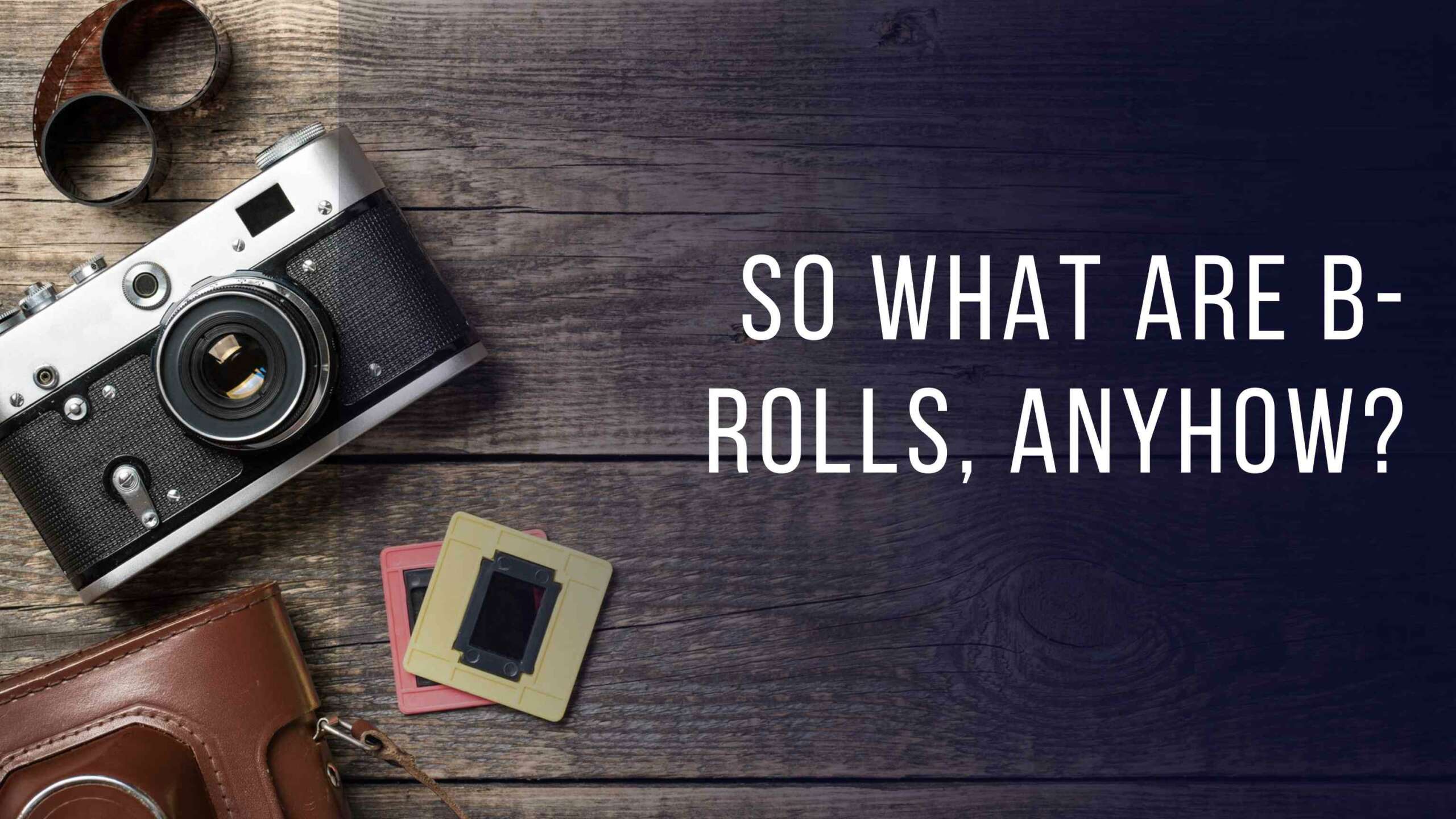What are B-rolls?
“B-roll” is a term used commonly within the film industry and probably lesser known otherwise. B-rolls can help you take your content to the next level in terms of storytelling, and lead to better viewer engagement. B-rolls are secondary or archive footage, which are not the part of the actual movie or a video, but are useful to create a transition or a connection between two scenes.
Basically, every scene in a movie where there are no actors, or isn’t a part of the acting script, is a B-roll.
How are they different from A-rolls?
Initially film makers used two separate kinds of footage, A-rolls and B-rolls. A-rolls were footage of the main subjects in films, where there are actors or some action going on which is a part of the main story. Essentially the A-rolls “tell the story”, like interviews or news segments.
B-rolls act as a kind of bridge between scenes. They’re not necessary to the script, but are a good continuation of the shots. Again, B-rolls aren’t necessary but are very important for various reasons. Without B-rolls, scenes might seem too stagnant or boring when they go on for too long. B-rolls provide visual support. They help keep the audience interested and immersed.
One major difference between an A-roll and a B-roll is that B-rolls do not have any sound. In most videos, the A-roll’s sound is usually played over the B-roll. For example: The anchor is speaking while the B-roll is supporting whatever the anchor is saying.
How are B-rolls helpful for filmmakers?
In films, B-rolls are used for many purposes but here are some important ones:
- To cover up mistakes: Sometimes during post-production, at the editing table, the editor realizes there are a few mistakes; for example, a crew member might have gotten captured in a shot, or there was a technical error. B-rolls are a perfect opportunity to cover this up, and can be used to make the sequence more interesting to the viewer.
To take another example: there might be a shot of an actor performing a stunt in a desert, but there is a spot where a tourist is captured looking into the camera by mistake. This can be covered up by different shots of the desert, sand dunes, or the sunset or a camel. Anything that could create continuity without shifting from the plot or making it look unreal.
- B-rolls are also used in films in a creative sequence. B-rolls can be used to create suspense, show the surrounding, show the locality and other story telling elements to build up a plot. For example: Close up of rain on the window, snow fall and so on.
If you look at this trailer of Zindagi na Milegi Dobara, the shots of the plane, passport stamp, the city are all B-rolls.
How are B-rolls helpful for Youtubers/content creators?
B-rolls “show” the story to the audience. They’re like a break from the monotonous video playing with the same constant visuals. Content creators use B-rolls in some of the most creative and artistic ways, to keep the users engaged and interested.
Let’s say you’re talking about Journaling. Some people might not even know what Journaling is, but even if they do, it’s better for a user’s attention span to visually show them a B-roll of a Journal, or someone performing the action of journaling. This acts as a visual aid and helps them better retain the content.
Where can one find B-rolls?
B-rolls are comparatively easy to shoot or find online compared to A-rolls. B-rolls don’t have sound, and don’t need long scripts to shoot. They’re literally 10-30 second videos of any subject. But, shooting good quality B-roll is much tougher than looking for high-quality B-rolls online.
IndieVisual.in is an India based stock footage website. The website offers affordable, high quality stock videos with a number of categories and videos to choose from. Compared to shooting B-rolls yourself, getting B-rolls from IndieVisual gives you the flexibility to choose, so the B-rolls fit perfectly with your requirements.
Best B-roll Practices
To make the most engaging and insightful videos/story of all time, mix A-rolls and B-rolls and maintain a balance. Here’s how:
- Gather B-rolls that explain and support your script.
- Place the b-rolls at the right time so the narration and video aren’t contrary. For example: A man scrolling through a website does not fit the context of a talk about wildlife. Sounds absurd, right?
- If you’re talking about India, make sure your footage has Indian elements like streets, people, food, culture in it. It may not be very flattering to have foreigners in your B-roll while talking about Indian people.
- Use them to create transitions from one point to another, with overlaid graphics. Here’s an example:
How to stop procrastinating and get work done
Time stamps: 1:15, 2:13, 3:17 etc. The shots of the laptop while she’s talking are all helpful in transitioning, in breaking the monotony and potentially even covering up any visual flaws in the main video.
Advantages of putting proper B-rolls in your videos:
- Telling better stories, as it shows the audience what your video is trying to convey and see things unfold as a story.
- Providing a visual aid to the viewers. Many viewers might not understand the meaning of exactly what your topic is all about, and that’s why they clicked on your video. Showing proper visuals while explaining helps have a better impact on the audience.
B-rolls might seem like they’re a superficial addition, but they’re definitely very important. In case you’re struggling with views on your videos, it might be beneficial to re-consider the importance of B-rolls and observe the difference before and after using them. Be it films, news or any YouTube video, B-rolls are important and can drastically improve any content.
Visit IndieVisual.in to shoot the most perfect, affordable Indian B-rolls for your videos.









